Living Warmth: Embroidery in South America
Embroidery is deeply entrenched in South American history, spanning from ancient times all the way up to the present day. Its history is fascinatingly diverse, demonstrating the great skill and ingenuity that has been passed on from one generation to the next through the millennia. Over the centuries, South American embroidery has evolved into a powerful visual language, one that has played a variety of roles, such as identifying wearers to their home region, and telling vivid and colourful stories. As with many nations, the history of South American embroidery spans a variety of styles, but certain characteristics, such as intense colours, dense fibres, rich storytelling and qualities of living warmth have remained a trademark feature.
Some of the earliest examples of South American embroideries were excavated from the graves of the pre-Colombian Paracas Peninsula, dating from roughly 500-100 BC. These mass burial sites were discovered in the 1920s, where bodies were wrapped in a variety of exquisitely detailed textiles, many of which featured hand-embroidered elements. Given the age of these fragments, they are remarkably well-preserved. Some feature illustrative stories and eccentric characters, such as the V&A Museum’s embroidered panel, which illustrates a floating shaman with a grimacing face, carrying a severed head. Made with stem stitch in wool onto cotton, the dark, full-bodied colours of this panel reveal the variety of coloured dyes that were being produced in ancient Peru, and how tactile and dense their fabrics were. In fact, 19th and 20th century discoveries reveal how ancient Peruvians placed great value on their cloth, fibres, embroideries and tapestries, even creating bas-relief artworks and sculptures from thread. In the days before written language, thread became a tool for communication, telling stories with recognisable shapes, symbols and motifs that could be passed through families and generations.
Embroidery has remained a mainstay of South American society since this time, and cultures across the continent have developed their own distinct embroidery traditions, often relating to the garments they adorn. In many indigenous cultures, woven bags were an important item that could help identify where a wearer was from, with motifs that related to a particular area such as local wildlife, star patterns and plant forms. Other significant items of embroidered clothing include the Manta cloak, originating from Peru and later popular throughout South America and Mexico. Made from a square of fabric, it is more commonly known today as a poncho, and worn by men, women and children.
Mantas were originally worn for festive occasions, but they have been adopted more recently as a practical form of outerwear that persists today. In early centuries the embroidery on mantas was usually carried out by men, but it later became a predominantly female occupation. Some are particularly elaborate, featuring richly illustrative embroidered stories including battle scenes, mythology and the natural world, while others feature geometric zig-zagged patterns.
The mola is another traditional garment from South America, originating in Panama, a short-sleeved blouse decorated on the front and back with dazzling panels of ornate embroidery in intense, vivid colours, usually worn by women. It is thought the style evolved from the indigenous Kuna women of Panama, who used to paint their naked bodies with similar intricate designs, which were later translated into embroidery.
In recent times the indigenous embroidery of South America has been revived and reinvented by a great many different creative makers, designers and artists. These include modern American fibre artist Sheila Hicks, who has looked to the tactile embroideries of ancient Peru for inspiration, drawing on the soft appeal and rich colours of their work and merging it with the abstract languages of modernity. Similarly, contemporary fashion house Oropendola aims to celebrate the importance of South American embroidery and keep it alive for future generations. They work closely with local skilled makers from Medellin in Colombia, ensuring fair trade, sustainable employment and the vitally important continuity of local, lovingly hand-made traditions, while also promoting the rising trend for careful, slow fashion.





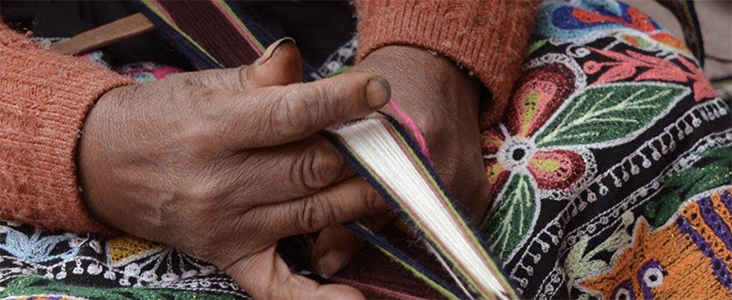


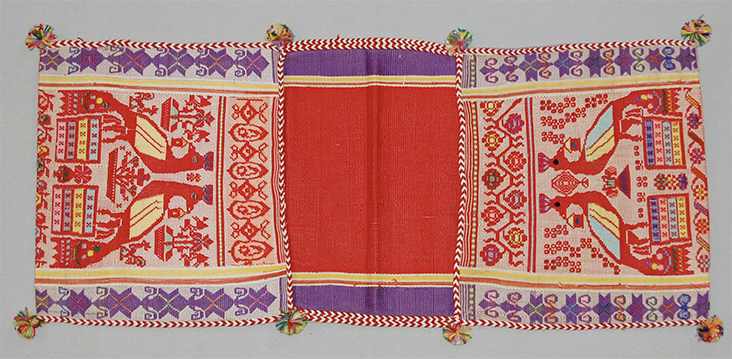
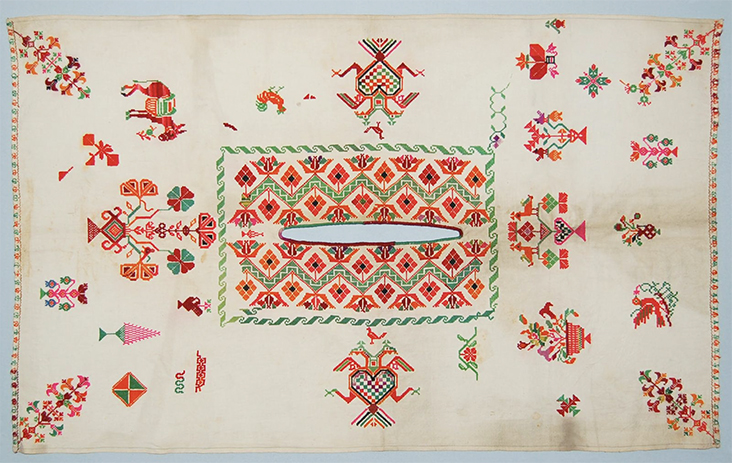
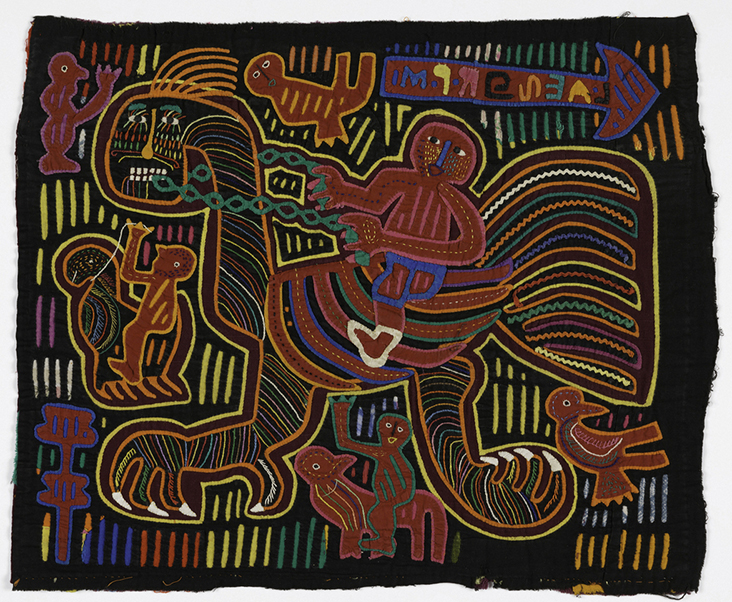
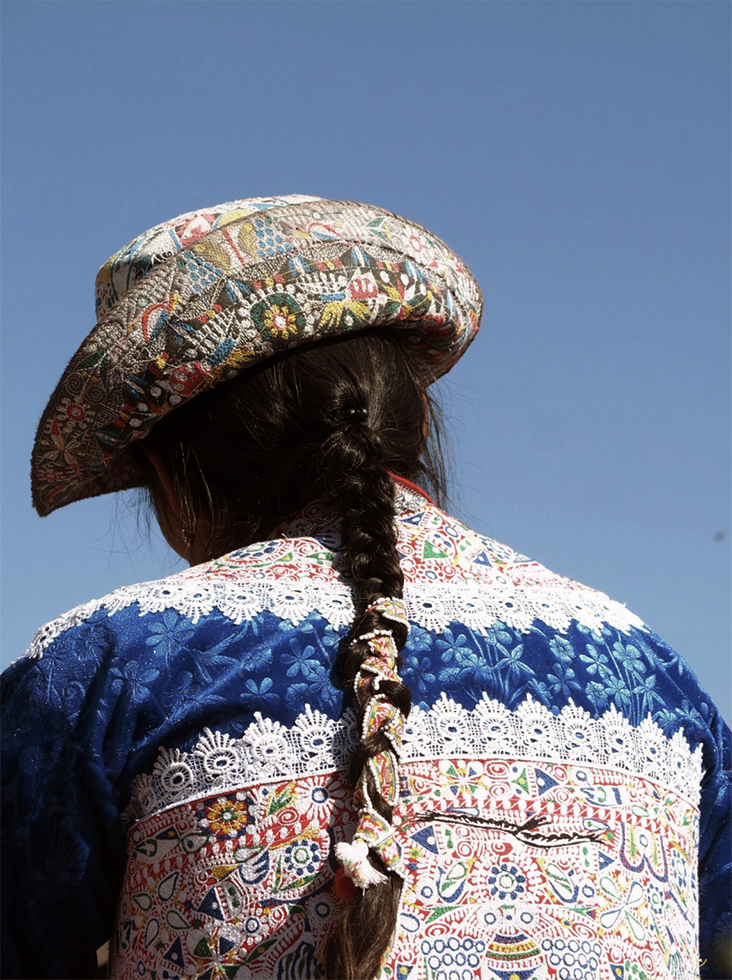




















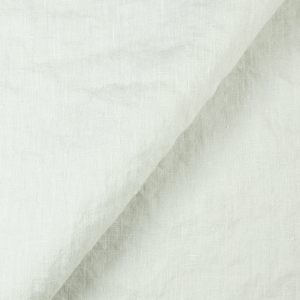




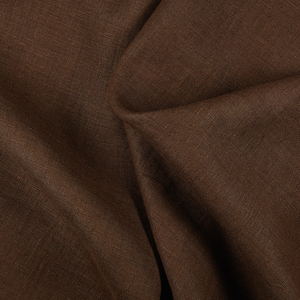



















3 Comments
Carole Kantor
When you call all the wonderful examples you show “embroidery” we overlook the variety of technical skills South Americans demonstrated in their ornamented textiles: tapestry/weaving, needle embroidery, reverse applique (as in molas).
Vicki Lang
Love the bright bold colors and interesting embroidery. I love the art work around the world. Thank you for the wonderful articles that you bring.
Kate Renwick
I love your articles about colour, embroidery and dyeing. Keep doing them please.